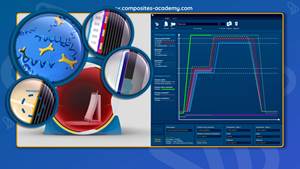Northrop Grumman to build Air Force’s Long-Range Strike Bomber
The LRS-B is designed to replace the Air Force’s aging fleets of bombers.
Northrop Grumman (Falls Church, VA, US) was selected by the US Air Force to build its next-generation Long-Range Strike Bomber (LRS-B).
“The LRS-B is critical to national defense and is a top priority for the Air Force,” said Secretary of the Air Force Deborah Lee James. “We face a complex security environment. It’s imperative our Air Force invests in the right people, technology, capability and training to defend the nation and its interests – at an affordable cost.”
The LRS-B is designed to replace the Air Force’s aging fleets of bombers – ranging in age from 50+ years for the B-52 to 17+ years for the B-2. The LRS-B provides the strategic agility to launch from the United States and strike any target, any time around the globe.
“The LRS-B will provide our nation tremendous flexibility as a dual-capable bomber and the strategic agility to respond and adapt faster than our potential adversaries,” said Chief of Staff of the Air Force Gen. Mark Welsh. “We have committed to the American people to provide security in the skies, balanced by our responsibility to affordably use taxpayer dollars in doing so. This program delivers both while ensuring we are poised to face emerging threats in an uncertain future.”
The Long-Range Strike Bomber contract is composed of two parts. The contract for the Engineering and Manufacturing Development, or EMD, phase is a cost-reimbursable type contract with cost and performance incentives. The incentives minimize the contractor’s profit if they do not control cost and schedule appropriately. The independent estimate for the EMD phase is $21.4 billion in 2010 dollars.
The second part of the contract is composed of options for the first five production lots, comprising 21 aircraft out of the total fleet of 100. They are fixed price options with incentives for cost. Based on approved requirements, the Average Procurement Unit Cost (APUC) per aircraft is required to be equal to or less than $550 million per aircraft in 2010 dollars when procuring 100 LRS-B aircraft. The APUC from the independent estimate supporting today’s award is $511 million per aircraft, again in 2010 dollars.
Based on current LRS-B independent cost estimates, the Air Force projects the APUC for the program will be approximately a third of the previous B-2 stealth aircraft.
The Air Force program office conducted design efforts with industry over the last three years to ensure requirements for the aircraft were stable and allowed for the use of mature systems and existing technology while still providing desired capability.
With that said, agile acquisition processes have been built into the LRS-B development and production efforts to ensure the Air Force delivers system capabilities for the best value. The program also effectively incentivizes industry to achieve cost, schedule and performance goals.
The LRS-B is designed to have an open architecture allowing integration of new technology and timely response to future threats across the full range of military operations. This open architecture also provides the opportunity to retain competition across the life cycle of the program.
Basing decisions and future program milestones for the aircraft will take place over the next several years.
Related Content
Inha University incorporates SwiftComp simulation software to virtually test composites
AnalySwift’s SwiftComp tool aims to mitigate the burden of costly experiments and enable accurate testing of woven and braided composite structures.
Read MoreFACC Academy begins training, onboarding operations
FACC’s newly launched training platform will address skilled aerospace worker shortages head on, offering more than 250 specialized training courses for its entire workforce.
Read MoreNew online training course targets prepreg basics
JEC World 2024: Composites Expert highlights how its E-Learning Composites Academy platform supports flexible industry learning with new courses developed with Stelia Aerospace North America.
Read MoreToray, University of Chicago speed up polymer recycling R&D
A jointly developed multi-scale computational predictive technique can accurately predict viscoelasticity from the chemical structures of polymers, ramping up product maturation.
Read MoreRead Next
Plant tour: Daher Shap’in TechCenter and composites production plant, Saint-Aignan-de-Grandlieu, France
Co-located R&D and production advance OOA thermosets, thermoplastics, welding, recycling and digital technologies for faster processing and certification of lighter, more sustainable composites.
Read More“Structured air” TPS safeguards composite structures
Powered by an 85% air/15% pure polyimide aerogel, Blueshift’s novel material system protects structures during transient thermal events from -200°C to beyond 2400°C for rockets, battery boxes and more.
Read MoreAll-recycled, needle-punched nonwoven CFRP slashes carbon footprint of Formula 2 seat
Dallara and Tenowo collaborate to produce a race-ready Formula 2 seat using recycled carbon fiber, reducing CO2 emissions by 97.5% compared to virgin materials.
Read More













.jpg;maxWidth=300;quality=90)











